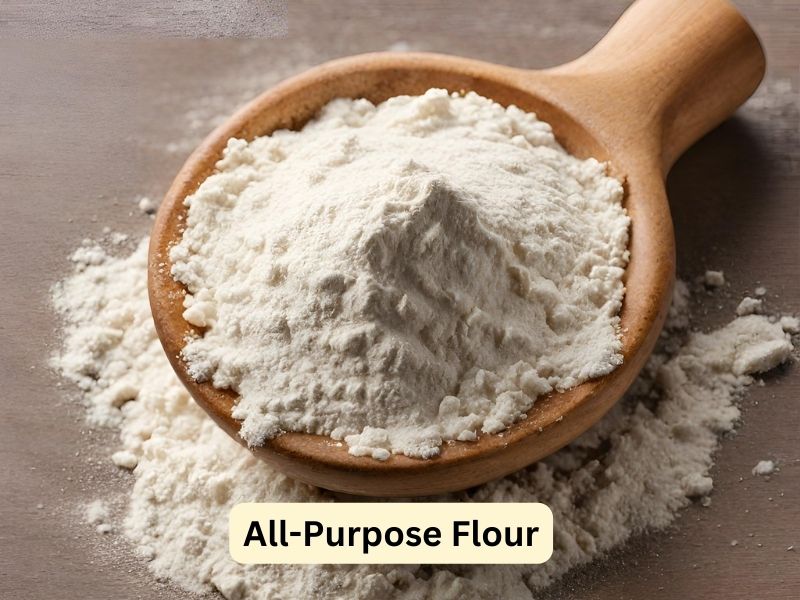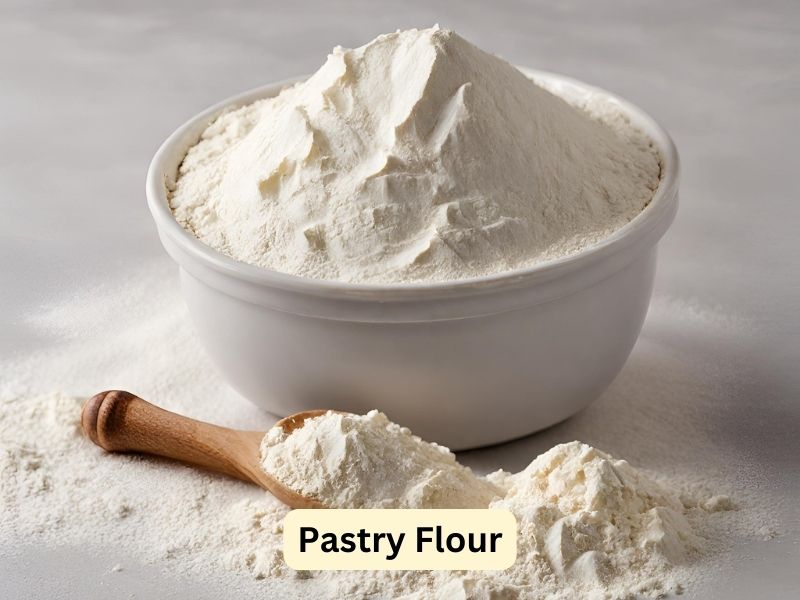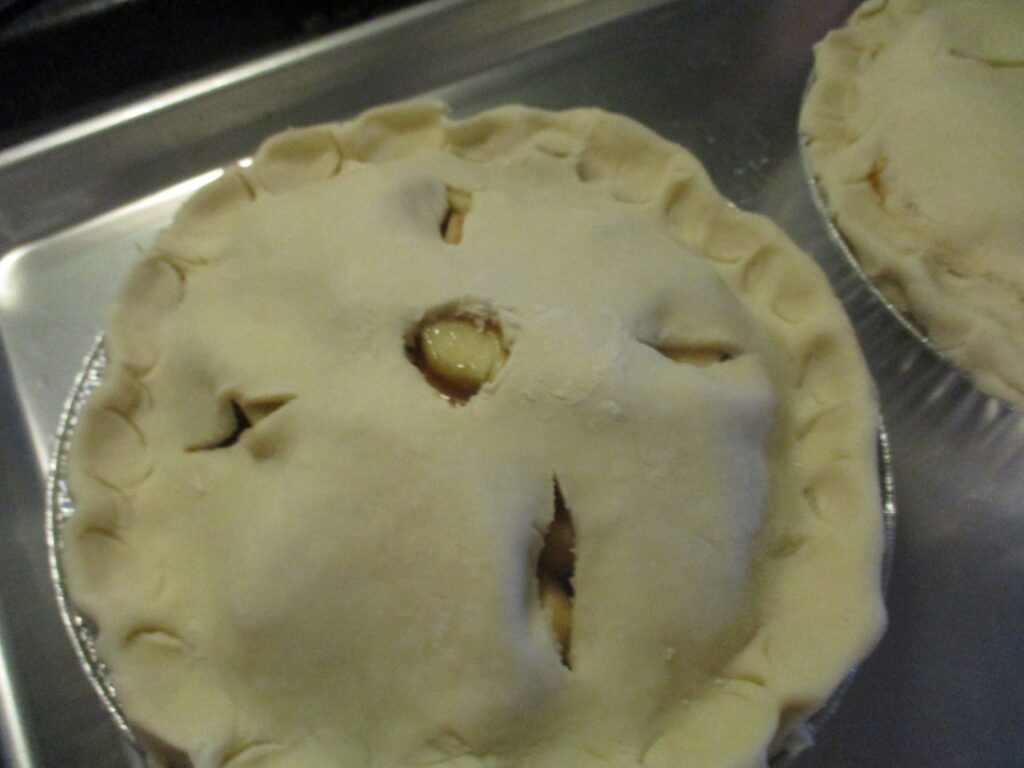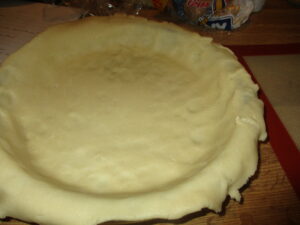I don’t normally make pie crust. The convenience of ready-made roll-up pie crust appeals to me. But I decided to “bite the bullet” because I was curious to know what flour is best when making pie crust. So, I made pie crusts for 2 pies using 2 different flours to judge for myself. With just 2 in our household, my husband has a lot of eating to do:) As for myself, I’m not much of a pie eater. Now Chocolate cake is another matter.
What Flour Is Best When Making Pie Crust?
You need to use a low protein content flour. Why? The higher the protein content the more gluten development you will have. While that is great when making bread, not so much with pie crust. The lower the protein content the more tender results you will get in pie crust and other baked goods. Pastry flour, which is low in protein content is specially made for those delicate pastries. And All-purpose flour is in the mid-range for protein content. However, you can make a flaky pie crust with all-purpose flour as well.
Types Of Flour



All-Purpose Flour
A blend of hard and soft wheat with a mid-range level of protein content of 10-11. It is the most used flour due to its versatility. Also known as plain flour and can be used in a wide range of baked goods such as pastries, cakes, pie crusts, and bread,
Pastry Flour
Flour made with soft winter wheat and has a low protein content of 8-10. It is designed to make pastries lighter and more delicate
Cake Flour
A very finely milled flour made from soft winter wheat. Low protein content and bleached for a paler color and grains less dense. This flour will produce cakes with a soft fluffy texture. However not suitable for pie crusts because it doesn’t give the elasticity needed.
Bread Flour

A high protein flour of 12-14. The extra protein results in more gluten, better rise, and chewier bread. Great for making pretzels, bagels, bread, and other chewy baked goods. Also really not suited for pie crust. After all, you want your pie crust tender and flaky not chewy
The Pie Crust Recipe I Used And Why
A pie crust is just made with 4 ingredients. Flour, fat, water, salt. Some add vinegar, which helps tenderize the pie crust and slightly inhibits gluten development, thus making for a flakier crust that is easier to work with. Some will add a little sugar to sweeten the crust just a tad.
Now as far as fat goes, the most popular are butter or shortening. Shortening has a higher melting point and is easier to blend into the pie dough and roll the dough out. And if you are going for pretty, the pie dough/crust made with shortening will hold its shape better. But it does lack the flavor of butter.
On the other hand, butter has the best flavor and forms light, lofty, flaky layers. The flakiness comes partly from the water content of the butter which evaporates as the pie bakes and turns to steam, which separates and puffs up the layers in the dough.
So I decided I wanted the best of both worlds, so to speak, and used a pie crust recipe using both shortening and butter. The flour I chose to use in each recipe was all-purpose and pastry. So, whatever flour you decide to use, they are interchangeable as far as measurements go. You can go here for more tips on making this pie crust
Classic Single Pie Crust
Ingredients
1 1/2 cups flour, pastry, or all-purpose
1/2 teaspoon salt
5 Tablespoons unsalted butter, cold
4 Tablespoons vegetable shortening.
3-5 Tablespoons of ice water
Directions
In a medium bowl, whisk flour and salt together
Add the shortening, working it in until the mixture is evenly crumbly
Add the butter to the flour mixture and work it in roughly with your fingers. Don’t be too thorough, the mixture should be very uneven, with big chunks of butter among the smaller ones.
Add 2 tablespoons of water and toss to combine.
Add enough water to make a chunky mixture. It should barely hold together when you squeeze a handful, though the remainder may look quite dry.
Shape the dough into a disk about 1″ thick, wrap it in plastic wrap, and refrigerate for 30 min. This resting period allows the flour to absorb the water, making the dough easier to roll out. If left longer than 30 minutes, allow it to rest at room temperature for 10-15 minutes to allow the butter to soften a little.
When it comes to rolling out your pie dough, the process can be tricky. Watch the video below.
What Flour Is Best When Making Pie Crust?

Have you noticed that most pie crusts call for all-purpose flour? Maybe because this flour is more readily available? We have a local Amish store, and that is where I got my pastry flour. Actually, out of curiosity. This is my first time using it.
Although pastry flour is noted to be better when making pie crust, you can achieve that flaky crust using all-purpose flour. The key is cold! Make sure your shortening and butter are chilled, use ice water, and keep the dough cold when rolling out. If it gets too warm, stop and rechill it. The chilling will make the dough easier to work with and helps it become nice and flaky. Try not to work with it too much.
Make sure that you are using flour with low protein content. After all, you don’t want to use bread flour, which has a high protein content. You want your pie crust flaky, not chewy. But out of curiosity, I tried making pie crust with bread flour. Not a good experience at all. Even chilled, the dough was not easy to work with. It kept falling apart during rolling. I finally just gave up.
My mother-in-law made excellent pie, in taste as well as looks. And she used all-purpose flour. But then, we all can’t be perfect, can we? They say practice makes perfect. I definitely need more practice. Who said, “easy as pie”?
What flour do you use when making pie crust? Please leave me a comment with your thoughts. I love hearing from you.
Keep On Baking
Taianne
Share The Love

I’m Taianne, the owner and operator behind We Are Baking. Baking my first cake at age 11 hooked me on creating sweet treats. Though my interest faded during childhood, it was rekindled when I married my apple pie-loving husband. I love trying new recipes, tweaking classics, and helping others learn the science and art of baking. I started We Are Baking to share tips, tricks, and favorite recipes I’ve discovered over the years. When not in the kitchen, I enjoy spending time with family and friends. My goal is to inspire others to embrace their creativity through baking. Feel free to contact me with any questions!
Taianne@wearebaking.com

